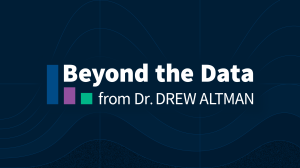The CBO Report That Didn’t Roar
 A Congressional Budget Office (CBO) report in September slipped through the health universe garnering some attention from health policy insiders, but not enough, going largely unnoticed by the larger health community despite its potentially broad implications for efforts to promote value through popular payment changes. Not necessarily in response to the report, the Centers for Medicare & Medicaid Services (CMS) may now also be hedging its bets, focusing on a more multipronged cost strategy than in the past.
A Congressional Budget Office (CBO) report in September slipped through the health universe garnering some attention from health policy insiders, but not enough, going largely unnoticed by the larger health community despite its potentially broad implications for efforts to promote value through popular payment changes. Not necessarily in response to the report, the Centers for Medicare & Medicaid Services (CMS) may now also be hedging its bets, focusing on a more multipronged cost strategy than in the past.
CBO found that most of post Affordable Care Act (ACA) payment and delivery demonstrations launched by the Centers for Medicare and Medicaid Innovation (CMMI) in CMS between 2011 and 2020 did not save money as intended, and cost the government $5.4 billion more than they saved, including administrative costs associated with them. CBO also projected that CMMI would be a net loser cost-wise for Medicare through 2030.
This matters because the CMMI demonstrations have been widely regarded as the leading edge of a generation of value-based payment initiatives which have become the primary cost strategy in the U.S. over the past decade, displacing what had always been the dominant schools of cost containment, competition (favored by conservatives), and regulation (favored by liberals). Following the old adage “Medicare sneezes and health care catches cold,” the demos have received consistent attention from the health delivery community, consultants, and companies ready to spread the ideas embodied in them throughout the health care system, both to do good and make money doing it.
YES BUT, there are several qualifiers to the doom and gloom in the CBO report:
CBO did not include the Medicare Shared Savings Program for Accountable Care Organizations, which was created by the ACA. CBO believes that produced small net budgetary savings.
Six of the 49 CMMI payment demonstrations did produce modest savings according to CBO, and four have been certified for expansion by the CMS Actuary, including an accountable care model and a diabetes prevention program.
The CMMI payment demonstrations CBO assessed were limited dose interventions. In most, provider participation was voluntarily. CBO cannot say whether a stronger version of these payment reforms, including mandatory models, would have a larger effect.
CMS has since evolved its strategy, integrating a focus on equity into almost everything it does, including at CMMI. For example, a new initiative called AHEAD, which stands for All Payer Health Equity Approaches and Development, will provide grants to states to establish hospital global budgets or cost targets, and also invest in in primary care and equity initiatives at the same time.
Following the CBO report, the new AHEAD initiative, with its simultaneous emphasis on hospital cost global budgets and cost targets, primary care and equity, is something of an everything bagel. With its emphasis on regulation, it may also signal an effort to diversify strategies at CMS. Notably, it is geared to states not providers, the focus of the demonstrations evaluated by CBO.
CMS’s goal remains to see every Medicare beneficiary in some form of accountable care arrangement in seven years. And recently former Health and Human Services Secretary Alex Azar called for an end to demos altogether, feeling value-based payment was the way to go. After all, Medicare spending growth has slowed in recent years. While the full explanation for that is not well understood, it’s possible that the drive towards value-based payment and accountable care has changed provider attitudes and behavior and is part of the explanation, though that is difficult to quantify. Still, Medicare spending is expected to accelerate in the future.
Back to the CBO report. Whatever the results of a particular group of demonstration projects, CMS will always need the authority to experiment with changes in its three big programs: Medicare, Medicaid, and the ACA. In a more perfect world not every demonstration would need to save the federal government money; some good things could actually cost more and might be worth investing in; for example, if they demonstrably improve access or health outcomes. Having worked in CMS earlier in my career trying to coordinate waivers from the administrator’s office, and once been nominated to run the agency, I know the need to have a division within CMS, like CMMI, to oversee R&D activity. In fact, it would make good sense to better consolidate CMS waiver and demonstration activity across Medicaid, Medicare, and the ACA within the agency, but that’s truly inside baseball and a subject for another day.
